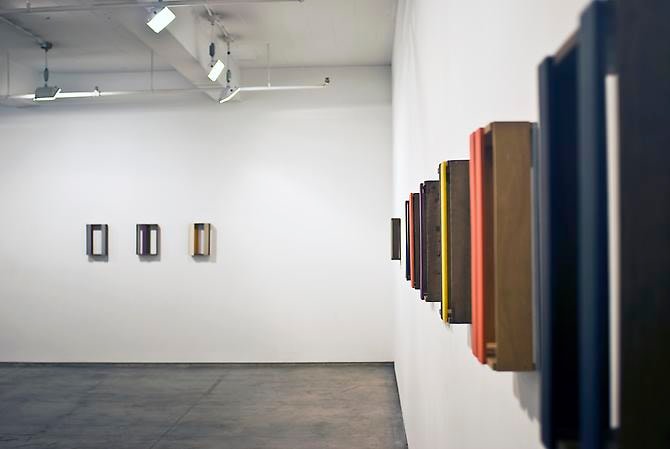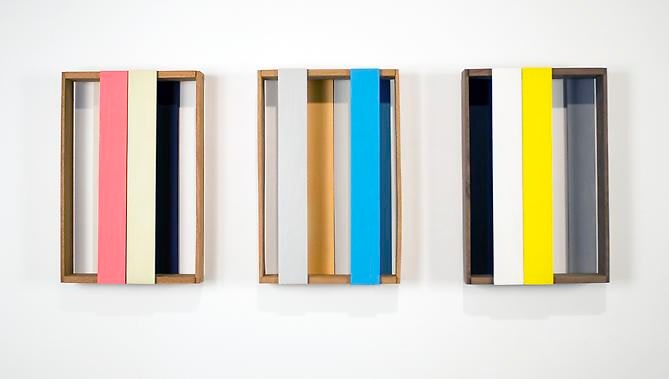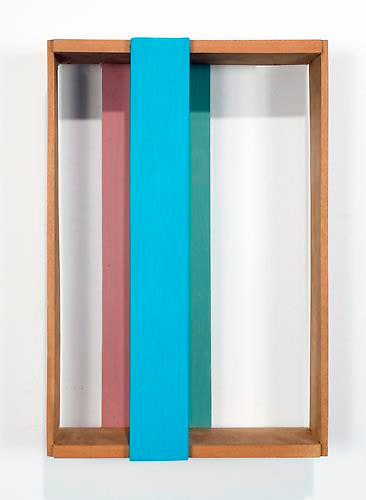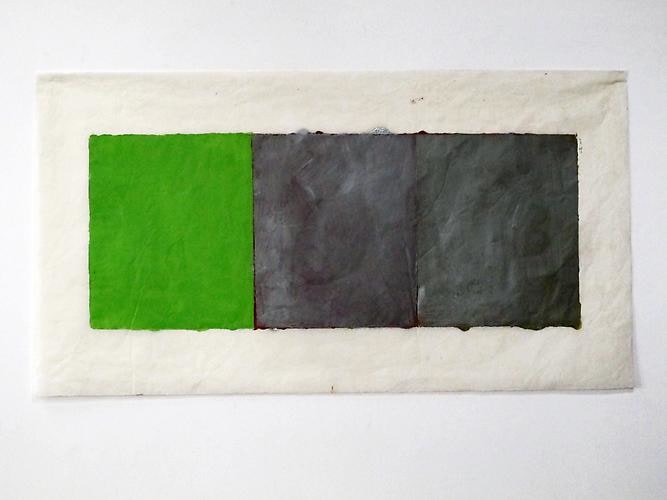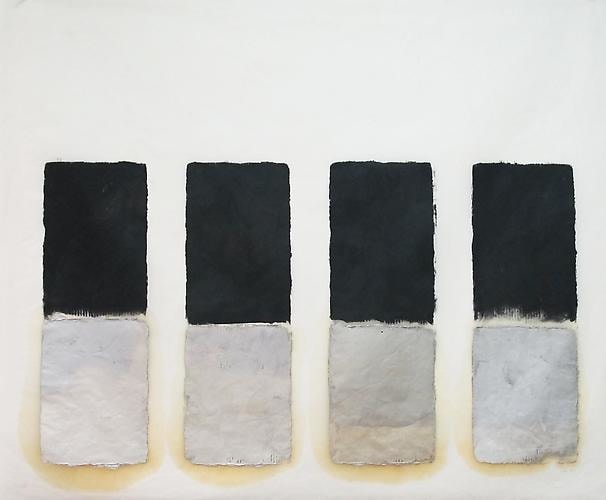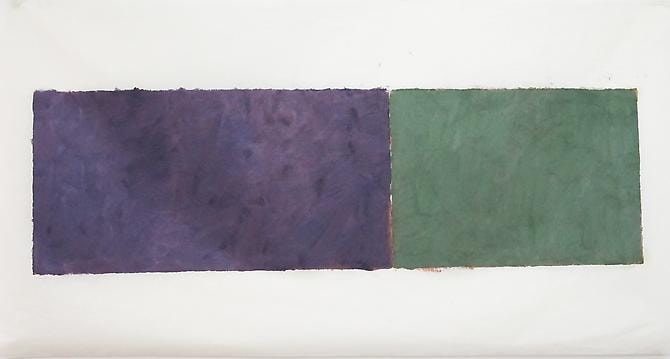The gallery is pleased to present Brazilian artist Sergio Sister’s first exhibition in the United States. Sergio Sister was born in 1948 in São Paulo, where he lives and works. His work stands at the edge between painting and sculpture. The paintings are supports derived from found structures, from systems designed to serve other needs. The Caixas (crates or boxes), Ripas (strips) and Pontaletes (posts) appropriate the names of the manufactured products from which they are derived. Sergio Sister's work relates to the US tradition of minimalism and to the Neo-Concrete movement of the 1960's in Brazil. Many bridges can be drawn between Sister's attempts to incorporate three-dimensional space and Mira Schendel's Sarrafos or Willys de Castro's Objectos Activos. Made of wooden beams dressed in canvas, Castro’s Objectos Activos investigated surface and depth through subtle color dislocations. The exhibition consists of twenty new Caixa paintings and recent works on paper.
For the past three years, Sister has been focusing almost exclusively on the Caixas, a body of work he first inaugurated in the 1990’s. Their wooden structure and small scale evoke fruit boxes, either replicating their complete architecture, or manipulated by moving or removing some of the planks. At first, the Caixas existed as studio-works, found-and-painted crates. By incorporating shadows and air into the flat field of painting, the found boxes afforded Sister the possibility to create a new spatial relationship.
Whereas the first Caixas are found objects, with a rustic surface and fabrication, the subsequent ones, of a denser wood, are commissioned to a carpenter’s workshop, then planks are primed and painted before the box is assembled by the artist. Sister's Caixas resemble frames or stretchers hanging naked on the wall, suggestive of passage and transition: windows, doorways, shipping containers. The Caixas exist as a multitude, offering various potential configurations. They can be re-positioned into distinct pairs, groups and assemblages, within a skillful game of subtle tonal variations and rhythms of wooden beams. The packing material made to carry the many fruit flavors is recycled to play up the freshness of color.
Sergio Sister studied painting at the Armando Álvares Penteado Foundation, in São Paulo in the 1960's. He undertook graduate studies in social sciences and post-graduate studies in political science at the University of São Paulo. In 1970, he was arrested for political reasons. While detained for 19 months at the Tiradentes Prison, in São Paulo, Sister attended painting workshops held at the institution. In 2002, the monograph Sérgio Sister was published by the editions Casa da imagem, with essays by Alberto Tassinari, Lorenzo Mammì and Rodrigo Naves. His work has been shown extensively throughout Brazil and is included in major public collections such as the Museu de Arte Moderna, the Pinacoteca do Estado in São Paulo and the Museu de Arte Moderna in Rio de Janeiro.

